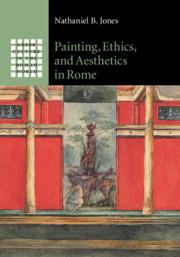Book contents
- Painting, Ethics, and Aesthetics in Rome
- Greek Culture in the Roman World
- Painting, Ethics, and Aesthetics in Rome
- Copyright page
- Dedication
- Contents
- Figures
- Plates
- Acknowledgments
- Abbreviations
- Introduction: The Painting of Painting in Ancient Rome
- 1 Winckelmann and the Cultural Dynamics of Painting
- 2 Disrupting the Frame
- 3 The Ethics and Politics of Art
- 4 Transparent and Opaque: Medium and Materiality on the Roman Wall
- 5 Paradigms, Ensembles, and Anachronisms
- Epilogue: Reflection and Reflexivity
- Bibliography
- Index
- References
Bibliography
Published online by Cambridge University Press: 28 January 2019
- Painting, Ethics, and Aesthetics in Rome
- Greek Culture in the Roman World
- Painting, Ethics, and Aesthetics in Rome
- Copyright page
- Dedication
- Contents
- Figures
- Plates
- Acknowledgments
- Abbreviations
- Introduction: The Painting of Painting in Ancient Rome
- 1 Winckelmann and the Cultural Dynamics of Painting
- 2 Disrupting the Frame
- 3 The Ethics and Politics of Art
- 4 Transparent and Opaque: Medium and Materiality on the Roman Wall
- 5 Paradigms, Ensembles, and Anachronisms
- Epilogue: Reflection and Reflexivity
- Bibliography
- Index
- References
- Type
- Chapter
- Information
- Painting, Ethics, and Aesthetics in Rome , pp. 235 - 282Publisher: Cambridge University PressPrint publication year: 2019



